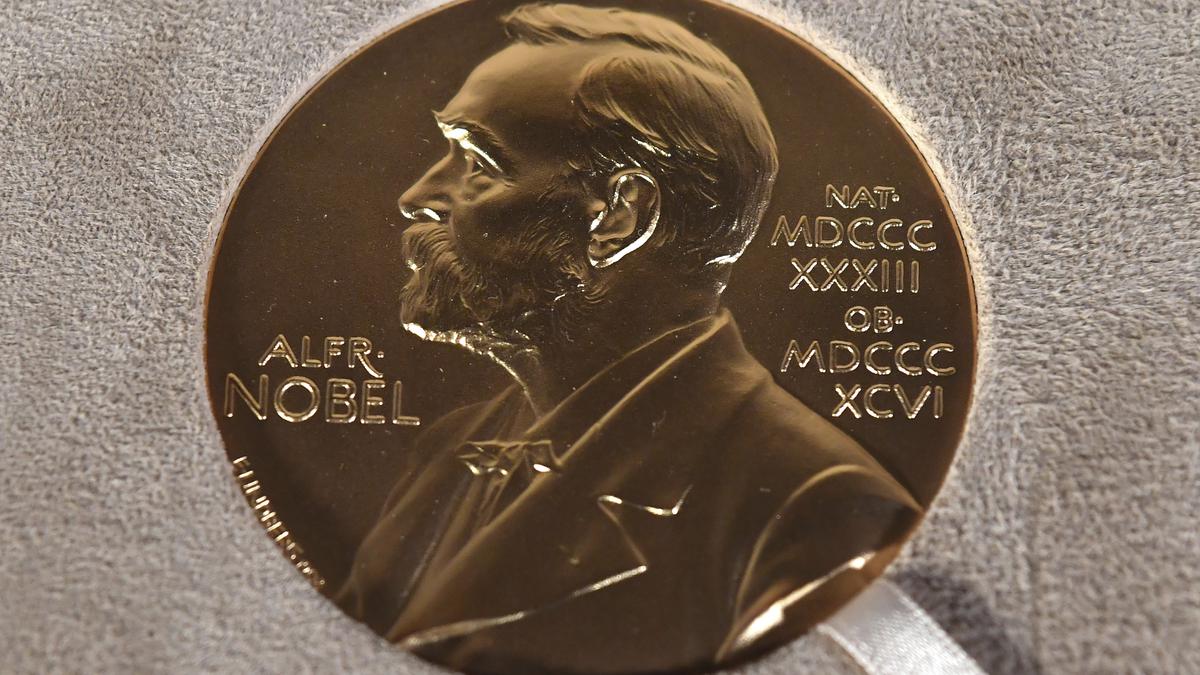
The Nobel Prize medal. | Photo Credit: Angela Weiss/AP
Gold is a precious metal famed for its use in jewellery and as a form of investment. Its atomic number is 79 and its Latin name is ‘aurum’, thus its symbol on the periodic table, Au.
Some 10% of all the gold produced around the world is used every year in industry thanks to the metal’s many desirable properties. For example, gold doesn’t dissolve in strong nitric acid whereas most metals do; this is why the term ‘acid test’ is used to refer to a test of someone’s character. Among the noble metals, only platinum is less reactive. Gold does dissolve in a solution of nitric acid and hydrochloric acid that alchemists called aqua regia, or “royal water”. It also dissolves in some alkaline solutions and in mercury, and is malleable, ductile, corrosion-resistant, and a good conductor of electricity. It is commonly used in industry to form connectors in computers.
South Africa has produced most of the world’s gold since the late 19th century, but today the largest producer is China (no. 6 on this list is the small country of Ghana). The cost of extracting and refining gold depends on where it is found, although gold nuggets are typically found in mountainous areas that also have quartz veins.
Each of the Nobel Prizes to be awarded from October 7 will include a medal of electrum, an alloy of gold and silver, plated with 24 carat gold.
Published – October 06, 2024 09:04 am IST


